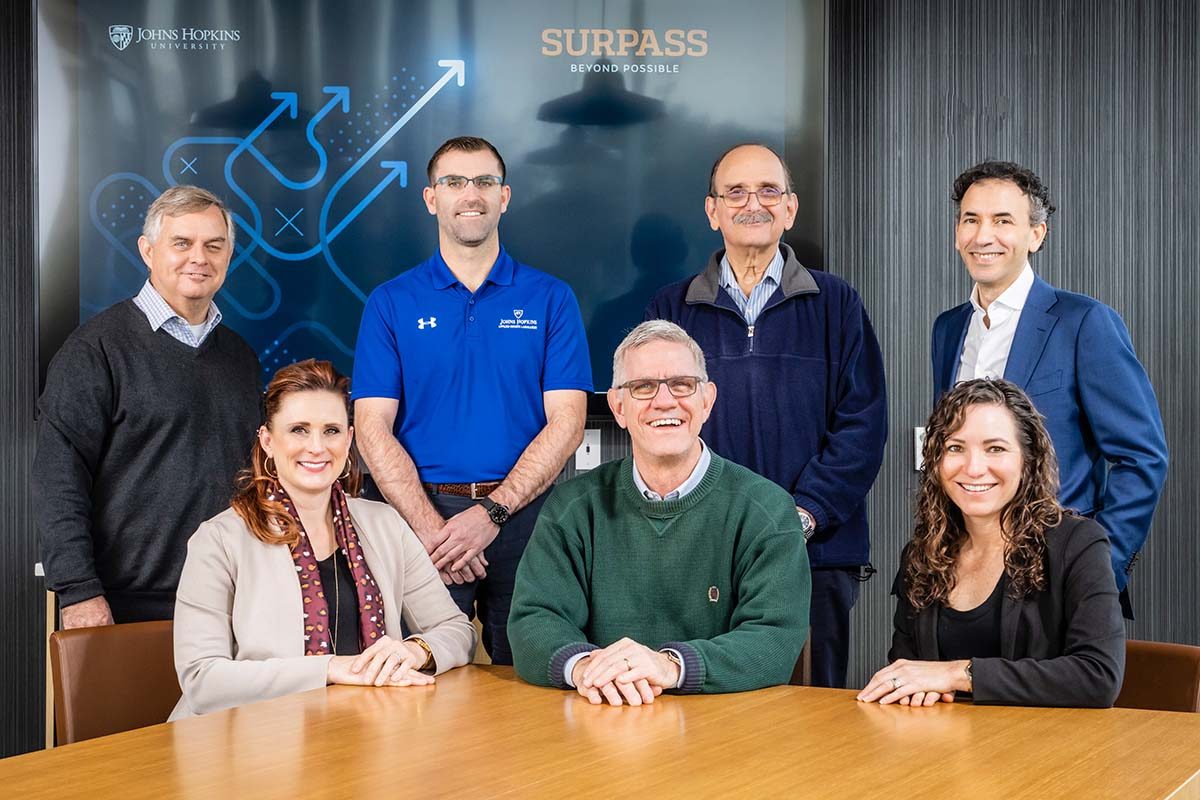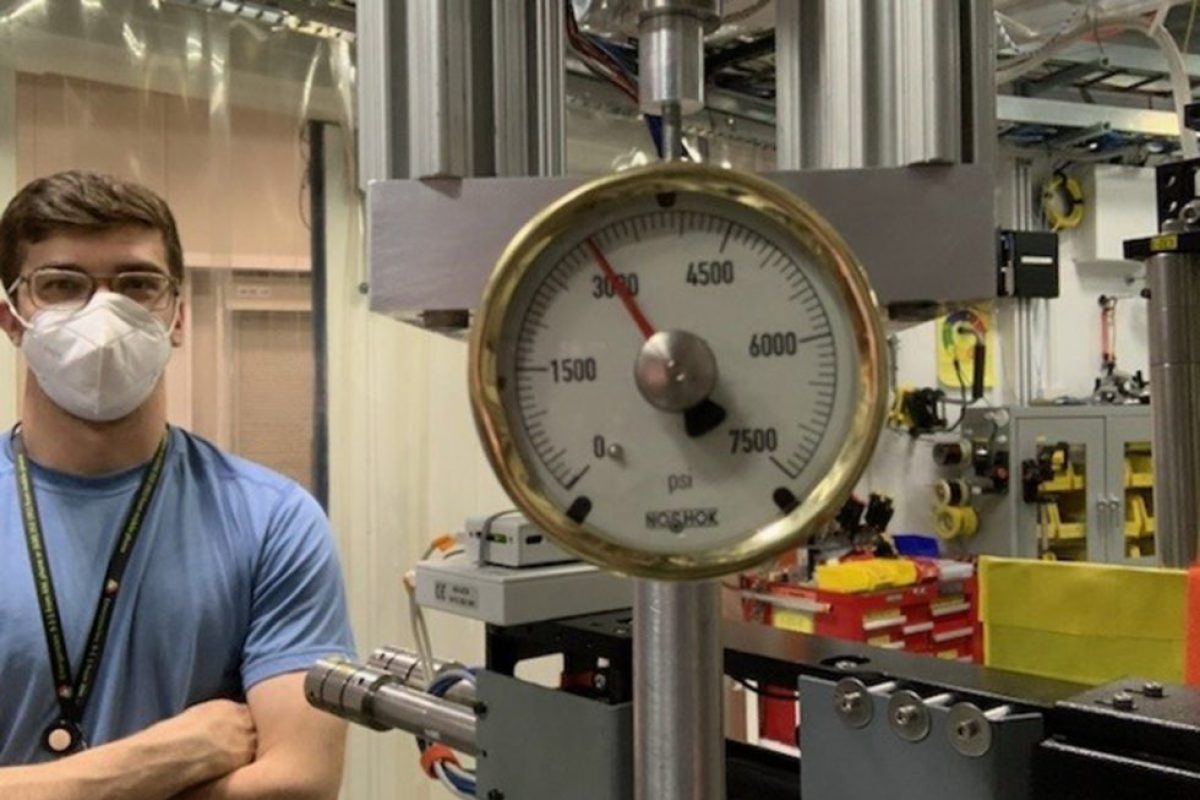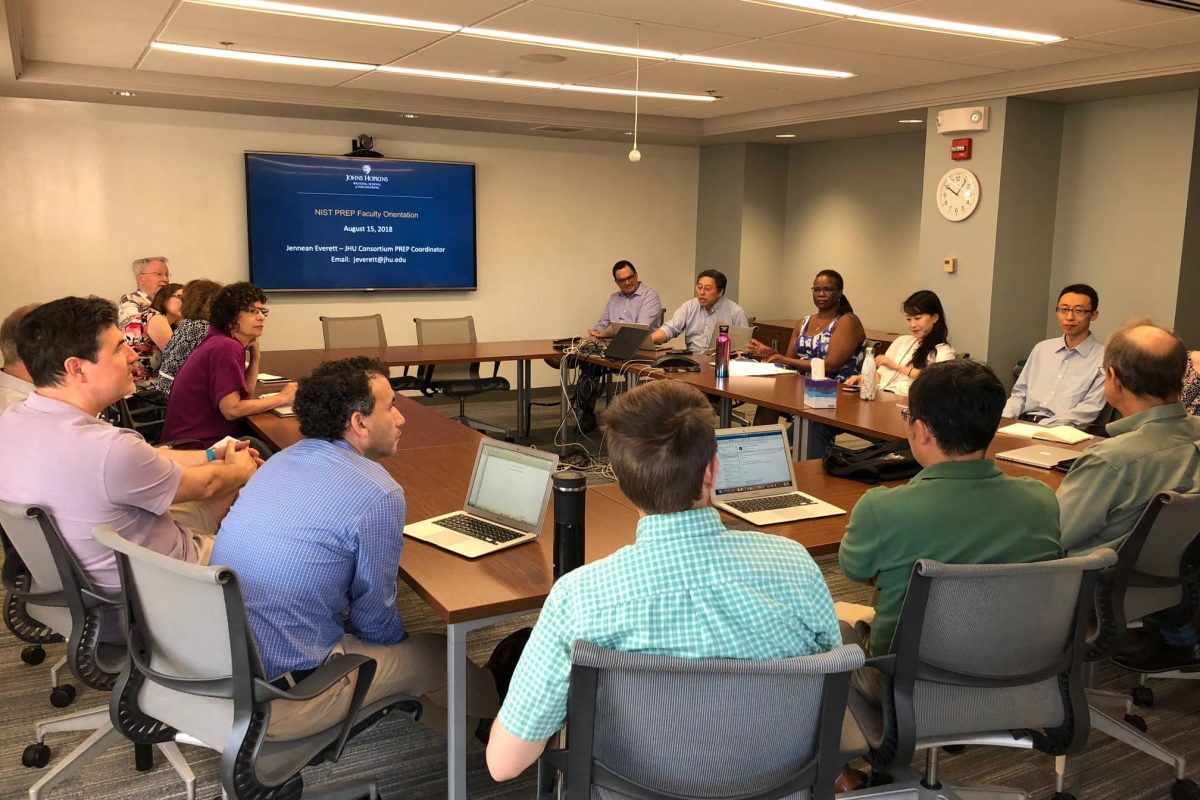Approximately 15 members of JHU WSE and KSAS faculty attended an orientation on the Johns Hopkins NIST PREP Consortium on Aug. 15 on the Homewood campus. Under the consortium, JHU faculty, staff, students, and affiliates have the opportunity to partner with NIST scientists and engineers for research projects totaling up to $30 Million over the course of five years. JHU WSE and KSAS is leading the consortium with Morgan State University and State University New York (SUNY) at Binghamton as partner universities.
“The whole idea is making this a true partnership,” said Larry Nagahara, WSE Associate Dean of Research. He added that the point is to have people working on site at NIST in Gaithersburg.
This is an opportunity to work with scientists and engineers from NIST on collaborative projects at centers and laboratories such as the Material Measurement Lab, Physical Measurement Lab, Engineering Lab, Information Technology Lab, Communication Technology Lab, Center for Nanoscale Science and Technology, and the NIST Center for Neutron Research. Nagahara noted that the current administration is very interested in quantum science and that NIST is a leader in this area.
The program covers a stipend or salary and graduate tuition for periods of three to 12 months.
“Because NIST covers the cost, this is the benefit of being a part of this program,” Nagahara said. “The equipment NIST has is world class, so having access to that and the people there would be a very valuable collaboration.”
Nagahara noted that the size of NIST is comparable to the Johns Hopkins University Applied Physics Laboratory in terms of the number of employees. As of 2016, NIST’s annual budget was $1.1 Billion, with a total of 3,192 employees spread between the Gaithersburg, Md. campus and the Boulder, Col. campus.
There are several schools that are able to compete for the available $30 million, including JHU WSE and KSAS, Morgan State University and SUNY Binghamton, which are part of the JHU PREP Consortium. The others include Brown University, Georgetown University, Montgomery College, Towson University, University of District of Columbia, and University of Maryland College Park.
Eligible applicants range from current undergraduate students to graduate students research faculty, postdocs, and even holders of JHU bachelor’s degrees and master’s degrees from.
Jennean Everett, senior project manager for the JHU PREP program, explained that recent graduates of JHU with a bachelor’s degree are eligible to work at NIST for up to five years before pursuing a graduate degree or seeking other employment. This is a new option NIST is offering to those who have graduated with a bachelor’s degree within the past five years.
Those interested in pursuing a project through the JHU PREP program should contact Jennean Everett, CGPO senior project manager, at jeverett@jhu.edu.




